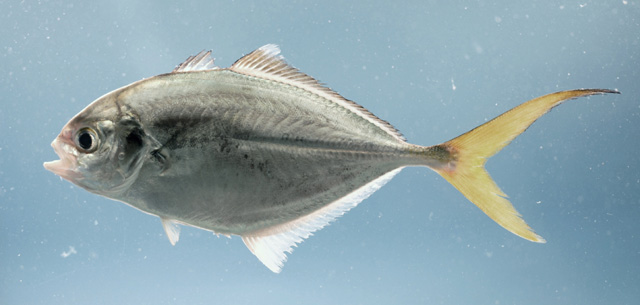| Carangidae (Jacks and pompanos), subfamily: Caranginae |
| 50 cm TL (male/unsexed) |
|
pelagic-neritic; marine; depth range - 50 m |
| Western Atlantic: North Carolina, USA and northern Gulf of Mexico southward to Florianópolis, Brazil; not found in most parts of the Lesser Antilles (Ref. 9626). Also found in Uruguay (Ref. 54736) and Argentina (Ref. 2806). |
|
Dorsal spines (total): 8-8; Dorsal soft rays (total): 27-27; Anal spines: 3-3; Anal soft rays: 23-23 |
| Adults are coastal species. They do not form large schools (Ref. 35237). Juveniles are encountered in brackish estuaries (Ref. 5217), moving to greater depths as it grows, but not deeper than 50 m (Ref. 9626). Eggs are pelagic, spawning occurs generally in summer (Ref. 35237). Marketed fresh (Ref. 9626). |
|
Least Concern (LC); Date assessed: 21 August 2012 Ref. (130435)
|
| harmless |
Source and more info: www.fishbase.org. For personal, classroom, and other internal use only. Not for publication.

